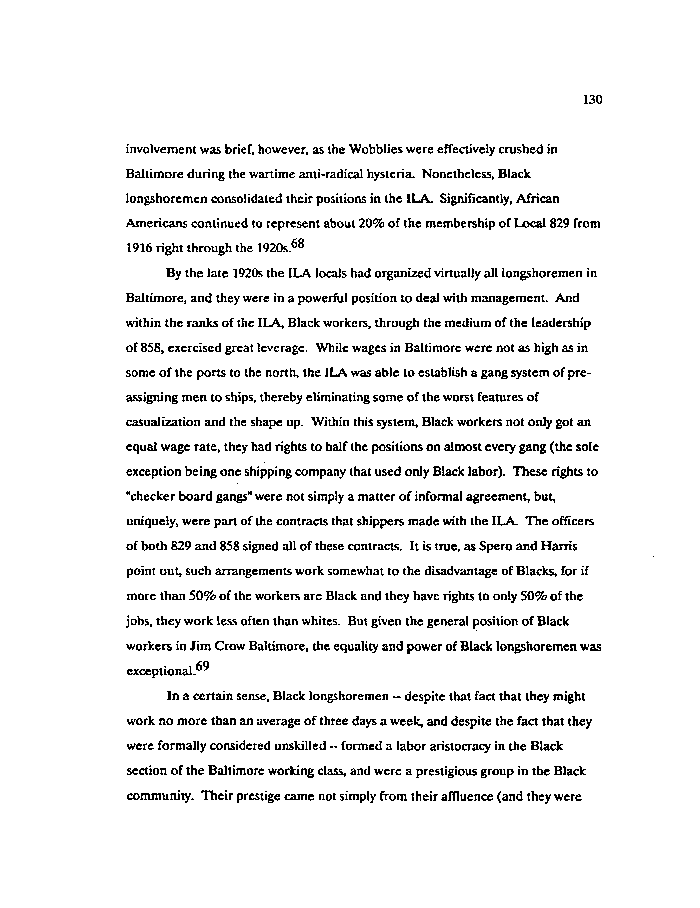|
130
involvement was brief, however, as the Wobblies were effectively crushed in
Baltimore during the wartime anti-radical hysteria. Nonetheless, Black
longshoremen consolidated their positions in the ILA. Significantly, African
Americans continued to represent about 20% of the membership of Local 829 from
1916 right through the 1920s.68
By the late 1920s the ILA locals had organized virtually all longshoremen in
Baltimore, and they were in a powerful position to deal with management. And
within the ranks of the ILA, Black workers, through the medium of the leadership
of 858, exercised great leverage. While wages in Baltimore were not as high as in
some of the ports to the north, the ILA was able to establish a gang system of pre-
assigning men to ships, thereby eliminating some of the worst features of
casualization and the shape up. Within this system, Black workers not only got an
equal wage rate, they had rights to half the positions on almost every gang (the sole
exception being one shipping company that used only Black labor). These rights to
"checker board gangs" were not simply a matter of informal agreement, but,
uniquely, were part of the contracts that shippers made with the ILA. The officers
of both 829 and 858 signed all of these contracts. It is true, as Spero and Harris
point out, such arrangements work somewhat to the disadvantage of Blacks, for if
more than 50% of the workers are Black and they have rights to only 50% of the
jobs, they work less often than whites. But given the general position of Black
workers in Jim Crow Baltimore, the equality and power of Black longshoremen was
exceptional.
In a certain sense, Black longshoremen - despite that fact that they might
work no more than an average of three days a week, and despite the fact that they
were formally considered unskilled - formed a labor aristocracy in the Black
section of the Baltimore working class, and were a prestigious group in the Black
community. Their prestige came not simply from their affluence (and they were
|

